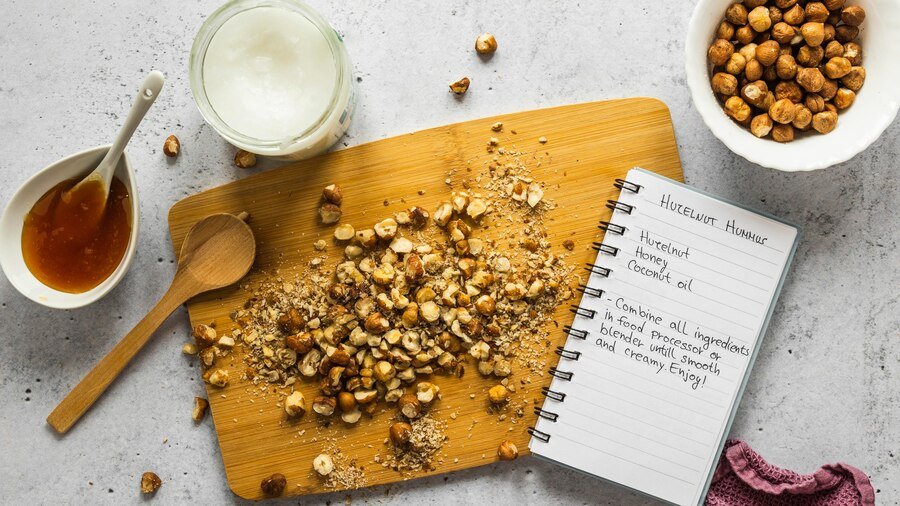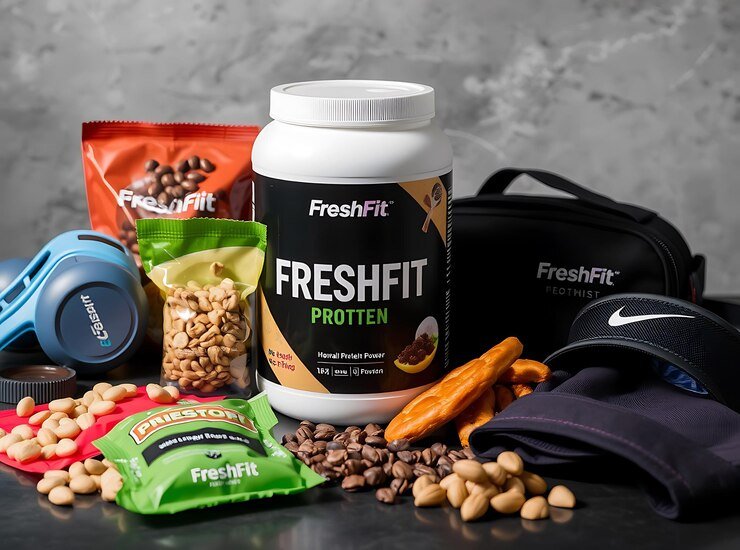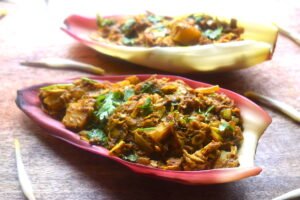Introduction to Ragi and its Nutritional Benefits
Ragi, also known as finger millet, is a powerhouse of nutrition that has been cherished in Indian kitchens for centuries. This tiny grain packs a punch with its rich nutritional profile and numerous health benefits. If you’re looking to elevate your baking game while keeping it healthy, ragi is your secret weapon. It’s gluten-free and loaded with fiber, making it an excellent choice for everyone—from health enthusiasts to those simply wanting a delicious snack.
Imagine indulging in baked goodies that not only satisfy your cravings but also nourish your body. With ragi as the star ingredient, you can whip up treats that are wholesome yet scrumptious. Whether you’re new to baking or an experienced home chef seeking healthier alternatives, incorporating ragi into your recipes will open up exciting culinary possibilities. Let’s dive into the world of ragi and discover how this versatile grain can transform your snacking experience!
Traditional Uses of Ragi in Baking
Ragi, also known as finger millet, has a rich history in various cuisines, especially in South Asia. Traditionally, it was a staple food among rural communities. Its versatility made it popular for baking nutritious snacks.
In many households, ragi flour is used to create dumplings and flatbreads. These are not only filling but also packed with essential nutrients. The earthy flavor adds depth to the dishes.
Another common traditional use involves making ragi porridge or pancakes. Families often enjoy these for breakfast or as wholesome snacks throughout the day.
Some regions even incorporate ragi into festive sweets and treats. By blending it with jaggery and coconut, they create delightful delicacies that celebrate local culture while promoting health benefits.
These age-old methods showcase how integral ragi has been in daily diets long before modern baking techniques emerged.
How to Incorporate Ragi into Your Baked Goods
Incorporating ragi into your baked goods is simple and rewarding. Start by substituting a portion of all-purpose flour with ragi flour. A 25-50% replacement works well without compromising texture or flavor.
Ragi’s nutty flavor complements various recipes beautifully. Try adding it to muffins, pancakes, or bread for added nutrition and taste.
You can also mix ragi with oats or whole wheat flour to create unique blends that enhance the nutritional profile of your snacks.
For moistness, consider adding ingredients like yogurt or mashed bananas when using rag in batters. This enhances both moisture and richness.
Experimentation is key! Adjusting baking times may be necessary since rag can affect how quickly items cook through. Enjoy the journey as you explore new flavors while boosting health benefits in your favorite treats.
Delicious and Healthy Ragi Snack Recipes
Ragi is incredibly versatile and can be transformed into a variety of healthy snacks. One delightful option is ragi muffins. These moist treats are easy to make, combining rag flour with bananas or applesauce for natural sweetness.
For something crunchy, try ragi crackers. Mix rag flour with spices like cumin and sesame seeds, roll them thin, and bake until crisp. They’re perfect for snacking or as an accompaniment to dips.
If you crave something sweet, consider making rag energy balls. Blend cooked rag with dates, nuts, and cocoa powder for a nutritious boost that’s great on the go.
Another tasty choice is savory rag dosa. Use fermented batter made from soaked rice and ground ragi flour to create crispy pancakes filled with your favorite vegetables or cheese.
These simple recipes showcase how adaptable rag can be in your kitchen while keeping your snacks both delicious and nutritious!
Tips for Using Ragi in Baking
When baking with rag, it’s crucial to balance its unique characteristics. Ragi flour is denser than traditional wheat flour, so consider blending it with lighter flours like whole wheat or almond for better texture.
Hydration is key. Rag absorbs more liquid, which can lead to drier baked goods if not compensated. Adjust your recipes by adding extra moisture—think yogurt or mashed bananas.
Experimenting with flavors can yield delightful results. Adding spices like cinnamon or nutmeg enhances the earthiness of rag and makes your snacks even tastier.
Don’t forget about rising agents! Since rag doesn’t rise as much as other flours, incorporating baking powder or soda will help achieve that fluffy consistency you want in cookies and breads.
Allow your batter to rest before baking. This helps improve the gluten structure and gives a softer finish to your treats. Happy baking!
Where to Buy Ragi and Its Availability
Ragi, also known as finger millet, has gained popularity due to its numerous health benefits. Finding this nutritious grain is easier than ever.
Local grocery stores often carry rag flour or whole grains in their health food sections. It’s worth checking out the organic aisle too, as many brands focus on natural products.
For a wider selection, consider visiting specialty health food shops. These places usually stock various forms of rag, from flour to snacks made with it.
Online shopping provides another convenient option. Numerous websites offer rag products delivered right to your doorstep. This is especially helpful if you’re looking for specific brands or bulk quantities.
Farmers’ markets are also a great place to explore local sources of rag. You might even discover unique homemade snacks that incorporate this superfood in delicious ways.
What is Ragi and its Health Benefits?
Ragi, also known as finger millet, is a nutritious whole grain that has been a staple in many cultures for centuries. This small, reddish-brown seed is packed with essential nutrients and offers numerous health benefits.
Rich in calcium, rag supports strong bones and teeth. It’s an excellent option for those looking to boost their mineral intake naturally.
Additionally, rag contains high levels of dietary fiber. This promotes healthy digestion and can aid in weight management by keeping you fuller for longer.
With its low glycemic index, rag is ideal for individuals managing blood sugar levels. It slowly releases glucose into the bloodstream, preventing spikes in energy levels.
Moreover, it’s gluten-free! This makes it suitable for anyone on a gluten-free diet or with celiac disease. Rag truly stands out as a superfood worth incorporating into your meals.
The Nutritional Profile of Ragi
Ragi, also known as finger millet, is a powerhouse of nutrition. It’s rich in essential amino acids, making it an excellent protein source for vegetarians.
This ancient grain stands out for its high calcium content. Just one serving can provide your daily requirement, supporting bone health and development.
Moreover, ragi is loaded with dietary fiber. This promotes healthy digestion and helps maintain blood sugar levels. It’s particularly beneficial for those managing diabetes.
The presence of antioxidants in rag aids in combating oxidative stress. These compounds contribute to overall wellness by reducing inflammation and improving heart health.
Vitamins like niacin and riboflavin found in ragi play vital roles in energy production. They help convert food into usable energy efficiently, keeping you energized throughout the day.
Incorporating rag into your diet means embracing a nutritional ally that supports various aspects of health while adding unique flavors to your meals.
Baking with Ragi Flour: Tips and Tricks
When baking with ragi flour, start by mixing it with other flours for a balanced texture. Combining ragi with whole wheat or almond flour enhances both flavor and nutrition.
Keep the moisture content in mind. Ragi absorbs more liquid than regular flour. Adjust your recipes accordingly to prevent dry baked goods.
Experiment with leavening agents like baking powder or soda. Ragi can be dense, so using these helps achieve a lighter texture.
Adding ingredients like yogurt or mashed bananas can improve softness and taste while boosting nutritional value.
Don’t shy away from spices! They complement ragi’s earthy flavor beautifully, making your snacks even more delightful.
Remember to let your batter rest before baking. This allows the flavors to meld together and improves the final product’s overall quality. Happy baking!
Delicious Ragi Snack Recipes
Ragi is a versatile grain that can be transformed into delightful snacks. One popular choice is rag cookies, which combine nut butter and honey for a healthy treat. These cookies are not only delicious but also packed with nutrients.
Another fantastic option is ragi energy balls. Simply mix rolled oats, rag flour, dates, and nuts together to create bite-sized power snacks. They provide an excellent boost before or after workouts.
For something savory, try making rag dosa. This thin crepe made from fermented batter offers a crispy texture paired with your favorite chutney. It’s perfect for breakfast or as an evening snack.
Don’t forget about rag pudding! Cook the flour with milk and sweetener to enjoy a comforting dessert rich in calcium and iron. Each of these recipes showcases the unique flavor of rag while nourishing your body.
Incorporating Ragi into Your Daily Diet
Incorporating rag into your daily diet is both easy and rewarding. Start your morning with a warm bowl of ragi porridge, topped with fruits or nuts for added flavor and nutrition.
You can also use rag flour in place of regular flour for healthier pancakes or crepes. The nutty taste enhances the dish while providing essential nutrients.
For lunch or dinner, consider making rag roti or dosa. These versatile options are perfect for pairing with curries, chutneys, or salads.
Snack time? Rag-based energy bars make an excellent choice. They’re simple to prepare and offer a nutritious boost when you need it most.
Don’t forget about smoothies! Adding rag flour to your favorite blend can enrich its nutritional profile without altering the taste significantly. Simple swaps like these create a balanced approach to healthful eating that’s sustainable over time.
Potential Side Effects of Ragi Consumption
While ragi is celebrated for its numerous health benefits, it’s essential to be aware of potential side effects. Some individuals may experience digestive discomfort when consuming rag. This can manifest as bloating or gas, particularly in those with sensitive stomachs.
Moreover, rag contains oxalates, which can interfere with calcium absorption if consumed excessively. For those prone to kidney stones, monitoring intake is advisable since high levels of oxalates may exacerbate the condition.
Allergic reactions are another concern. Though rare, some people might have sensitivities or allergies to millet grains like rag. Symptoms could range from skin irritations to respiratory issues.
Moderation is key in any diet that includes new foods. Observing your body’s response after introducing rag can help you gauge how well it fits into your lifestyle without adverse effects.
Conclusion
Ragi, often referred to as finger millet, is a powerhouse of nutrition that can transform your baking experience. Packed with essential nutrients like calcium, iron, and fiber, ragi offers numerous health benefits. It’s an excellent choice for those looking to make healthier snack options.
Incorporating rag into your baked goods is not only easy but also rewarding. From traditional recipes passed down through generations to modern twists on snacks, there are countless ways to enjoy this versatile grain. Whether you are whipping up muffins or cookies, the nutty flavor and unique texture of rag will elevate your creations.
If you’re new to using rag in baking, start by substituting it for part of the all-purpose flour in your favorite recipes. Experimenting with different ratios can help you find the perfect balance that works for you while maintaining taste and texture.
You’ll find plenty of delicious snack recipes featuring rag that cater to every palate—from crunchy bars to soft cookies. These treats not only satisfy hunger but also provide a nutritious boost throughout the day.
When purchasing rag flour or grains, check local grocery stores or specialty health food shops. Online retailers offer various brands as well if you’re unable to locate it nearby.
Ragi does come with its own set of considerations; ensure you consume it in moderation if you’re sensitive to high fiber content. As always consult with a healthcare professional if you’re unsure about incorporating new foods into your diet.
Embracing rag adds diversity and nutrition without sacrificing flavor in your baked snacks. Give it a try—your taste buds and body might just thank you!







